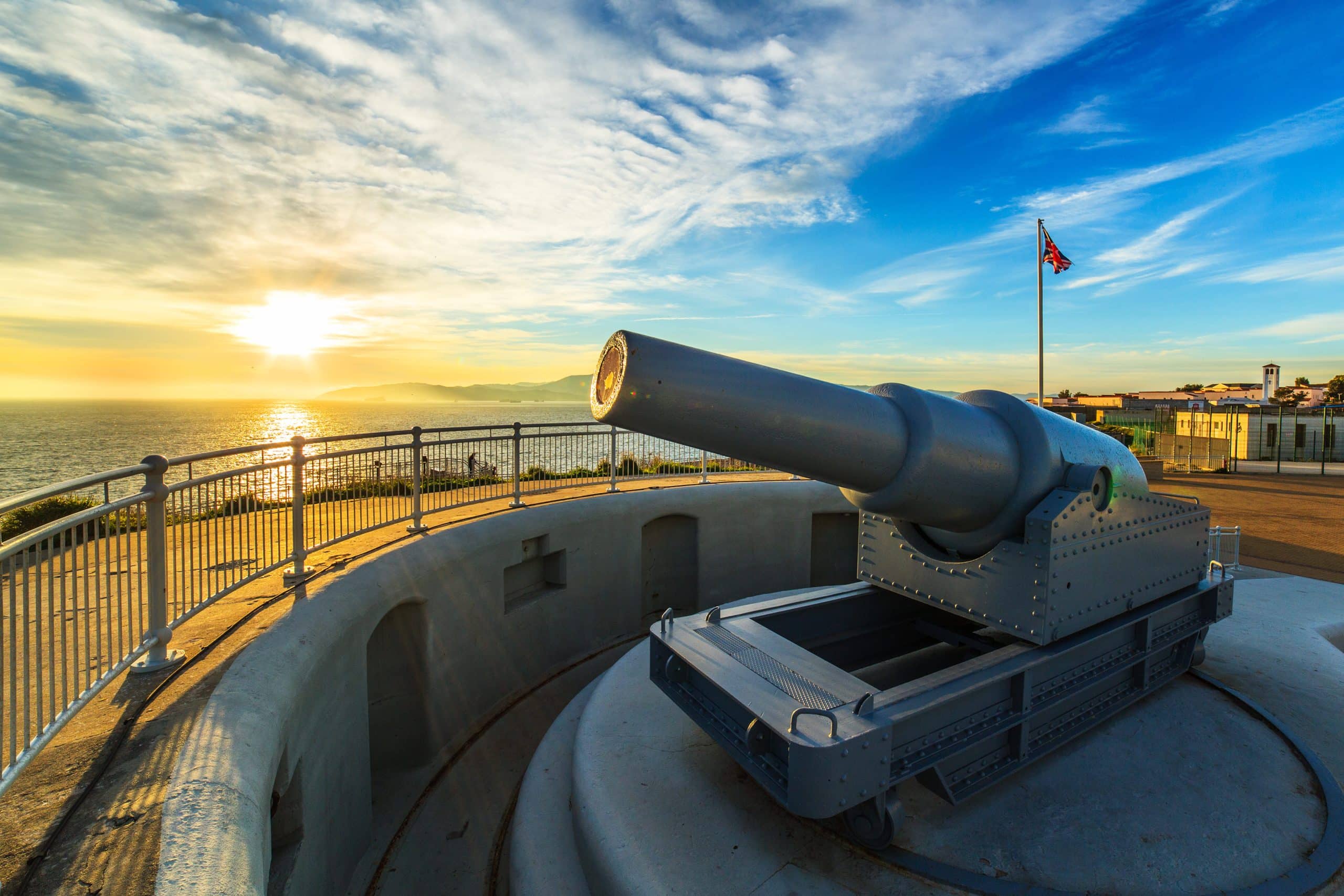
From War Zone to Tourist Attraction: The Transformation of Gibraltar’s World War II Sites
In this Article
1. Gibraltar During WWII
2. Preserving History
3. A Link to the Past
4. Conclusion
Gibraltar, a small yet strategically significant territory located at the southern tip of the Iberian Peninsula, played a crucial role during World War II. Its strategic location at the entrance to the Mediterranean Sea made it a focal point of military operations. Today, the remnants of Gibraltar’s wartime past have been transformed into fascinating tourist attractions that offer a unique glimpse into its rich history. In this article, we’ll explore how Gibraltar’s World War II sites have evolved from war zones to must-visit tourist destinations.
Gibraltar During WWII
Gibraltar’s strategic importance during WWII cannot be overstated. As a British territory, it served as a vital naval base and a key point for controlling access to the Mediterranean Sea. The Rock of Gibraltar, with its formidable natural fortress, became the site of extensive military fortifications. The British military fortified Gibraltar with a network of tunnels and bunkers to protect against potential invasions and to house troops and supplies.
The Role of Gibraltar in WWII
Gibraltar in WWII was not just a defensive stronghold but also a launch point for Allied operations in North Africa and Southern Europe. Its airfield and naval facilities were crucial for the success of operations such as Operation Torch, the Allied invasion of North Africa. The resilience and strategic ingenuity displayed by the British forces stationed in Gibraltar played a significant role in the overall success of the Allied efforts during the war.
Preserving History
After the war, Gibraltar faced the challenge of preserving its extensive wartime infrastructure. Many of the tunnels and fortifications fell into disuse and disrepair. However, recognizing the historical significance and tourist potential of these sites, efforts were made to restore and open them to the public. Today, these sites provide an immersive experience for visitors interested in military history and the impact of WWII on Gibraltar.
The Great Siege Tunnels
One of the most popular attractions in Gibraltar is the Great Siege Tunnels. Originally excavated during the Great Siege of Gibraltar in the late 18th century, these tunnels were expanded significantly during WWII. They provided a safe and strategic location for troops and artillery. Today, visitors can walk through these tunnels and see the rooms and passageways that played a crucial role during both the Great Siege and WWII. Informative displays and exhibits provide context and details about the conditions and challenges faced by the soldiers who lived and worked there.
The WWII Tunnels
The WWII tunnels are another highlight for visitors to Gibraltar. These extensive tunnels were carved out of the limestone rock during the war and served as a secure underground network for military operations. The tunnels housed barracks, hospitals, and storage facilities, effectively creating an underground city. Guided tours of the WWII tunnels offer a fascinating insight into the logistics and daily life of the soldiers stationed in Gibraltar during the war. Visitors can see the living quarters, command centers, and even the remnants of wartime graffiti left by the soldiers.
O’Hara’s Battery
O’Hara’s Battery is a well-preserved artillery battery located at the highest point of the Rock of Gibraltar. Originally built in the 19th century, it was upgraded during WWII to include anti-aircraft guns and observation posts. Today, visitors can explore the battery, see the impressive artillery pieces, and enjoy panoramic views of the surrounding area. The site also features informative displays about the history of the battery and its role in Gibraltar’s defenses during the war.
A Link to the Past
Preserving Gibraltar’s WWII heritage is not only important for historical accuracy but also for fostering a sense of connection to the past. The sites and stories from this period provide a tangible link to the events that shaped the modern world. For visitors, especially those with a keen interest in military history, exploring these sites offers a unique opportunity to step back in time and experience history firsthand.
Boosting Tourism
The transformation of Gibraltar’s WWII sites into tourist attractions has also had a positive impact on the local economy. These attractions draw visitors from around the world, boosting tourism and providing economic benefits to the community. The revenue generated from tourism helps fund further preservation efforts, ensuring that these important historical sites are maintained for future generations. Guided tours led by knowledgeable local guides Rocky Monkey provide in-depth insights and anecdotes, making the history of Gibraltar in WWII accessible and fascinating for all ages.
Conclusion
Gibraltar’s journey from a war zone during WWII to a vibrant tourist destination is a testament to the resilience and historical significance of this unique territory. The transformation of its WWII sites into engaging and educational attractions offers an unparalleled opportunity to explore Gibraltar’s rich wartime history.
Rocky Monkey specializes in bringing this history to life with our local guided tours. Our knowledgeable guides will take you deep into the heart of Gibraltar’s wartime tunnels and fortifications, providing fascinating insights and stories that you won’t find anywhere else.
Don’t just read about history – experience it firsthand. Book your tour with Rocky Monkey today and embark on an unforgettable journey through Gibraltar’s WWII heritage. Whether you’re a history buff or simply looking for a unique adventure, Rocky Monkey has the perfect tour for you. Join us and discover the hidden stories of Gibraltar during WWII.






